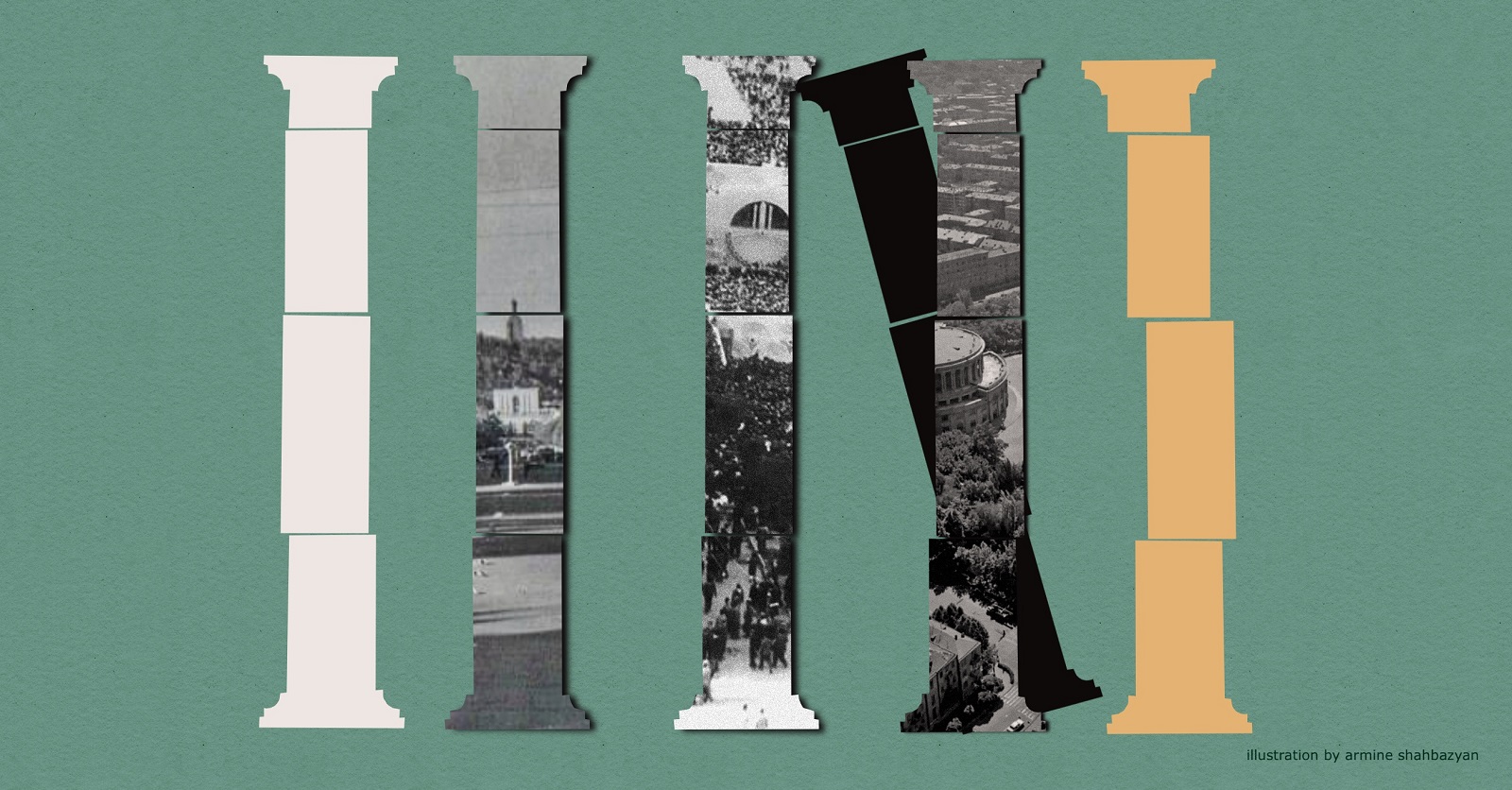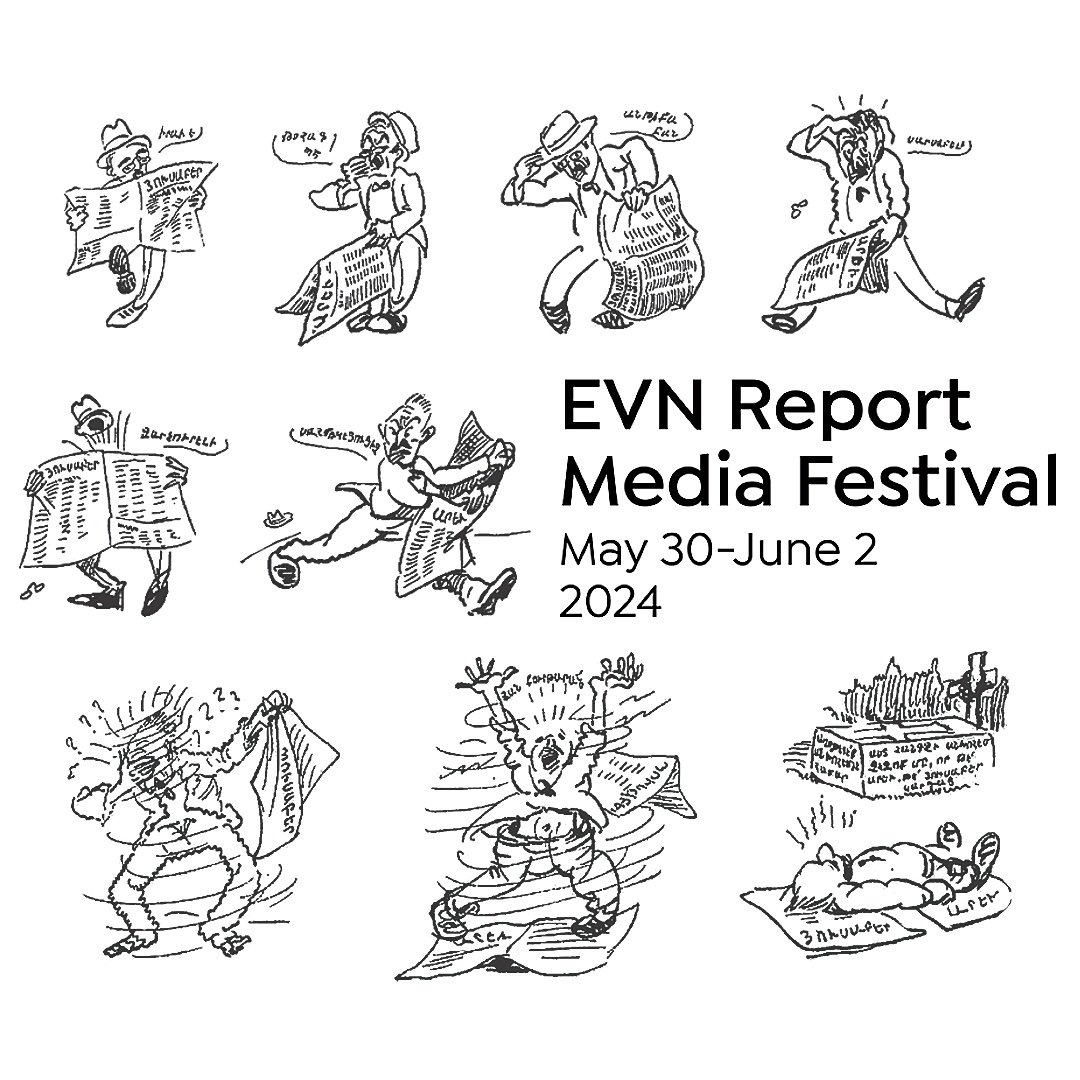
Listen to the article.
The devastating consequences of the 44-Day War in 2020 and the ethnic cleansing of Artsakh in September 2023 have exposed the vulnerability of Armenian state institutions, which proved incapable of safeguarding citizens. These traumatic events also revealed an existential crisis. Weakened, divided, and endangered, can today’s Armenia represent the Armenian nation globally?
Until now, we have been accustomed to a triad representation: “Armenia, Artsakh, Diaspora.” This trinity was believed to be immutable, but in reality, it’s untrue because it implied putting the three pillars of the Armenian world on the same level, without understanding their singularity and complementarity.
The Armenian nation also took pride in its dualistic perspective: two states (Armenia and Artsakh), two capitals (Yerevan and Stepanakert); two Catholicoi, one based in Etchmiadzin and the other in Antelias, Lebanon; and two variants of the Armenian language (Eastern and Western).
Maps printed in the 2000s showcased the territorial enlargement of Artsakh, surrounded by adjacent Azerbaijani districts, as secured and definitive. In so doing, the cartographers chose to ignore reality, betting on a fait accompli and the continuation of a seemingly enduring status quo. These maps and narratives raise issues of territory, nation and state: three concepts that remain difficult to reach consensus on even today.
Firstly, the debate over the reform of the Republic of Armenia’s constitution challenges the values and principles central to Armenian nationalism. This includes the demand for international recognition of the 1915 genocide and the right to self-determination of the Armenians of Artsakh. Secondly, the Republic of Armenia’s 29,800 km² territory has never been fully ingrained into the Armenian collective consciousness, either in the diaspora or within Armenia itself.
Overlooking the borders redrawn to favor Soviet Azerbaijan in the last century, the primary representation for many activists still remains the great “free and reunified” Armenia as per the 1920 Treaty of Sevres. This encompasses present-day Armenia, Artsakh, Nakhichevan, Javakhk and the six vilayets of Western Armenia. Before the genocide, it was difficult, if not impossible, to agree upon the boundaries of a non-sovereign Armenia. The French ambassador to Constantinople, Paul Cambon, once questioned: “Where does Armenia begin and end? What territories are we talking about, and how do we represent them?
This touches upon a problem of representation that has been at the core of Armenian political thought since the French Revolution. Expressing nationalism through maps can be a form of violence for both the vanquished and the victors.
What Is a Nation-State?
A nation-state is a specific type of state where the majority of the population belong to the same nation. It is built upon the union of a sense of identity tied to a group (the nation), and a legal order (the state) which includes sovereignty and the political and administrative institutions that exercise it. Without this union, we’d be considering a multinational state or an empire, both of which allow the coexistence of ethnic minorities.
Experts traditionally define two models of nation-state formation: the French model and the German model. However, this perspective has been criticized in the 21st century for being overly simplistic and Eurocentric.
In the French model for example, the formation of the state preceded the creation of the nation. In other words, nationalist sentiment developed after the state was established. In other cases, such as in Germany and Italy, the identification with a nation, whether “ethnic” or “civic”, and the desire to coexist, preceded the notion of the state. This was a gradual process in both cases, resulting from the convergence of beneficial socio-economic circumstances and political proselytizing over several generations.
The term “nation-state” is difficult to define in the context of Armenia due to both objective and subjective reasons. First, from a demographic perspective, only about a third of the Armenian nation, assuming seven million Armenians in the diaspora and three million in Armenia, reside in the Republic of Armenia. In this respect, modern-day Armenia resembles 19th century Greece, which was small and not the center of Hellenism.
Second, the increasing political distrust between Armenia’s elites and diaspora communities weakens two pillars of the Armenian world. It is one thing to criticize leaders who may not be held accountable for their actions, but it is another to discredit the offices they hold. This behavior and mutual grievances contribute due to a lack of state culture in Yerevan and the diaspora. Ideally, the interests of the individual should be subordinate to the structure, and not the other way around.
Is Armenia a Nation Like Any Other?
Instead of discussing the concept of a singular nation or nation-state, we prefer the term “transnation”. Renowned Armenian-American scholar of diaspora studies, Khatchig Tölölyan, uses “transnation” to refer to a homeland and its diasporic communities.[1] The idea of an “Armenian transnation” is similar to the term “Armenian World”, which is increasingly used by scholars and observers of Armenia-diaspora interactions to denote the Republic of Armenia and a wide range of diaspora stakeholders and representatives.[2]
While weak, the concept of the state has never been totally absent from Armenian political thought. The rebirth of the Armenian state in 1918 may have been accidental, but the Armenian Republic’s coat of arms, with its direct references to medieval Armenian kingdoms, emphasizes continuity. The unique Armenian experience, where the nation precedes the state and the state struggles to represent the entire nation, can be examined through the concept of “iconography”. French geographer Jean Gottmann (1915-1994) introduced “iconography” to geography, giving it a different meaning from its use in art history. This concept is useful for analyzing the transformations of neo-Hellenism. Gottmann’s exploration of iconography begins with its purpose or its outcome: the “compartmentalization of geographical space”. The unification of the world, or the absence of compartmentalization, is a long-standing ideal. But is it achievable?
Geographer and former Greek diplomat George Prevelakis notes that contemporary Greeks use the term “Hellenism” to transcend the confines of the nation-state. They attribute both historical and geographical significance to the term, using it to connect with their illustrious past and assert a geographical presence that extends beyond national boundaries and citizenship.
Until 2023, the Armenian world identified itself through the triptych of the Republic of Armenia, Artsakh, and the Diaspora. This iconographic representation of identity acknowledges that the Armenian state’s limited territorial base, a result of the 1921 Treaties of Kars and Moscow, does not fully encompass the Armenian world. Throughout history, various figures such as intellectuals, religious, military, and political leaders, along with engineers and scientists in modern societies, have managed this iconography. What remains unchanged is religion, political history and social organization. In the Armenian context, the Armenian Church, the guardian of national identity and refuge of faith, assumes the role of the state in the absence of political sovereignty. The Church represented the nation to imperial powers such as Persia, Russia, and the Ottoman Empire, functioning as a secular and religious institution simultaneously.
Iconographies are not static –– they are dynamic, circulating, strengthening, and weakening over time. Armenia’s spatio-temporal trajectory provides a good insight into the significance of iconography. This is evident not only in the Church but also in the Armenian revolutionary movement. The mythology of the Armenian Revolutionary Federation-Dashnaktsutyun, founded in 1890, is closely associated with the cult of the fedayees (Armenian freedom fighters) and the organization’s historical leaders.
The memory of the genocide, the longing for the lost country (yerkir), passed down through compatriotic unions, and the memory of the First Nagorno-Karabakh War are all integral parts of this iconography. Within the Armenian diaspora, various iconographies exist, including Syrian-Lebanese, Caucasian, Egyptian-Canadian, and Iranian, contributing to a transnational consciousness carried by diasporic families and diverse pan-Armenian organizations.
The cultural and artistic influence of these iconographies puts the modesty of the Armenian space into perspective. It also helps to contextualize the extent of the trauma caused by the unprecedented civilizational shrinkage since 1915, brought about by the loss of Artsakh.
The relative absence of a common identity marker beyond the memory of the genocide and the connection to the cause of Artsakh remains a significant hurdle to establishing a unifying national narrative. This narrative would center around an inclusive Armenian state as the primary focus of the Armenian world in the nation’s collective consciousness. In other words, it’s not national ideology and the state that should serve an ideal, but rather the other way around.
Footnotes:
[1] Khachig Tölölyan, “Elites and Institutions in the Armenian Transnation”, Diaspora: A Journal of Transnational Studies, vol. 9, no 1, 2000, 107-36.
[2] Rob Kitchin and Mark Boyle, “Diaspora Strategies in Transition States: Prospects and Opportunities for Armenia” (working paper), National Institute for Regional and Spatial Analysis, 2011.
EVN Security Report
EVN Security Report: March 2024
In Armenia, establishing a Western pivot was crucial to achieve an independent foreign policy and enhance security capabilities, paving the way for diversification in foreign and security relations. This process involves pivoting first, diversifying, and only then adopting hedging strategies.
Read moreSee all Security Reports
Also see
Can Armenia Be Independent?
In a voluminous collection of texts, historian and former diplomat Jirair Libaridian examines the reasons behind the moral, military and intellectual defeat of the Armenian elite in the context of three issues: the contemporary history of the Republic of Armenia, the Nagorno-Karabakh conflict, and Armenian-Turkish relations.
Read moreBetween State and Fatherland: A Tale of Two Mountains
Mount Ararat doesn't stand as an obstacle to building a functional state, and suddenly loving Mount Aragats will not help us achieve our goals. Before we jettison our national symbols en masse, we need concrete plans and state-driven programs to improve the lives of an already beleaguered nation, writes Daniel Tahmazyan.
Read moreFrom Constructivist to Liberal Realism: From Nation to State
The restoration of Armenian sovereignty in 1991 prompts us to contemplate the future of Armenia and its position in the international order, writes Gaidz Minassian.This is all the more pressing when the Armenian state has never been thoroughly examined through the lens of international relations theories.
Read more






The author poses a question in the title but fails to provide his answer. Instead, we’re given a defintion of the “nation state”, and some historical background info, and a few of his personal musings on the current situation. Does anyone at EVN Report edit such opinion pieces?
As scholars of imperialism note, a nation-state, in contrast to the empire, provides citizens with equal rights (at least de jure). In this framework, nationality is equal to citizenship. One can be Armenian by ethnicity but American, French, etc. by nationality. Thus, the ‘common [national] identity marker[s]’ transcend ethnic particularities, drawing rather on the unifying moments in the history of the state, culture, etc. Indeed, in the case of Armenia, the nation can with some level of accuracy be equated to ethnicity. However, what about the ethnic non-Armenians gaining Armenian citizenship (and further attributes such as speaking the language or even being baptized within the Armenian church)? Can a national, i.e. state identity in the 21st century of increased mixture and mobility be built exclusively on ‘blood’?